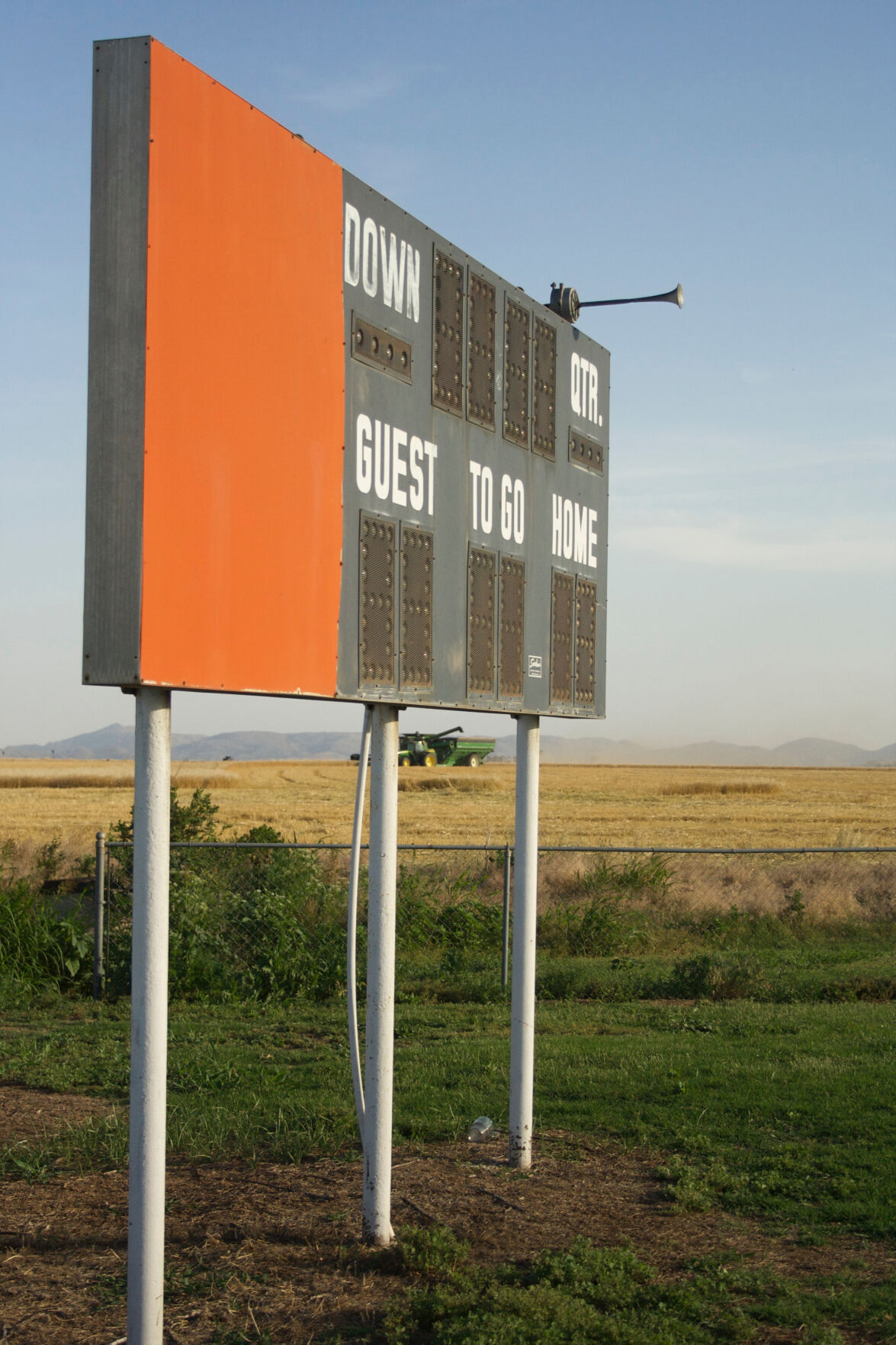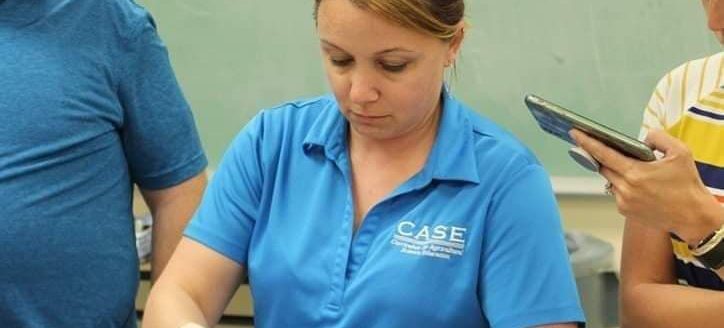Mayberry was a small, rural town, but the streets always seemed to be bustling during episodes of The Andy Griffith Show. There was always a line at Floyd’s barber shop, and the town had clothing stores, a butcher shop, a hotel, a grocery store and kids could usually be seen playing in the streets.
Yes, the town seemed to be a thriving community like many others of its size in the 1960s, but what would Mayberry look like today? Would those businesses still be open, would those children stay in Mayberry to raise their families or would Mayberry be a dwindling community like many rural towns in this day and age?
Rural America is facing a crisis right now with a lack of jobs, poverty and depopulation, but some in the research field are passionate about finding solutions to assist these communities with the uphill battle they are facing.
In 2019, Oklahoma State University’s Vice President of Research Kenneth Sewell sent an email asking faculty members to identify challenges in Oklahoma that could be improved upon through OSU research. With funding on the table for these projects, faculty members started submitting proposals for Sewell to consider and one of the ideas that rose to the top was rejuvenating rural communities. From this, the Rural Renewal Initiative was born. Tyson Ochsner, OSU professor in plant and soil sciences, Shane Robinson, OSU professor in agricultural education, Paul Weckler, OSU professor in biosystems and agricultural engineering, and Mark Woodring, assistant dean for rural health at the OSU Center for Health Sciences serve as co-directors of the initiative, which began in 2020. According to Ochsner, most of the team members on the RRI are from small, rural communities in Oklahoma.
“All of us have a heart for these people and places and if our research can make a difference there, that’s what we want to do,” he said.
In Oklahoma, a large portion of residents are considered to be living in rural areas, making issues in rural communities all the more crucial to solve.
“In Oklahoma there are roughly 4 million people total and I’m estimating 1 million live in Oklahoma City and 1 million live in Tulsa,” Robinson said. “The rest are outside those areas, which could be considered rural. You’ve got a huge part of the population that’s living in places where jobs are infrequent or nonexistent, structures are dilapidated, and health care availability is questionable. I often think about how we’re going to feed the world and for me, it’s going to continue to come from family farms. We need them to be successful so that we can live in Stillwater, Oklahoma City and Tulsa and continue to live our lives, eat, have shelter, clean water and thrive. So many of our thoughts need to be on how we can help people thrive in rural areas. Unfortunately, there are a lot of rural communities that are neglected, overlooked and just in need of help. As a land-grant institution, we decided to put our focus into developing a proposal that would hopefully highlight the needs of rural Oklahoma and beyond.”
Ochsner said the struggles and challenges rural communities face can be sorted into three broad areas: natural capital, which means the natural assets that help support a community like the soil, water, atmosphere and living organisms; human capital, which can be as simple as depopulation or more people moving away or passing away than people moving in and being born; and built capital, which could include dilapidated buildings on main street or lack of infrastructure for access to high-speed internet.
“As natural, human and built capital are depleted, more people, jobs and wealth move away from the community and it makes a negative downward spiral,” Ochsner said. “We want to use research to find effective ways to help turn that spiral in the other direction to let communities find ways to reinvest in their capitals. With that reinvestment, they can start to attract people and jobs back to their community and in turn have good quality of life impacts for the people in the communities. But there are no easy answers to that and that’s where the research part comes in. We’ve got to discover what works in each community.”
Rural scholars
The Rural Renewal Initiative is made up of three pillars: rural scholars, seed grants and the Rural Renewal Symposium. Rural scholars are on-site student researchers, sent out to rural Oklahoma counties to conduct place-based research, provide community service and collaborate with seed grant faculty members. Although the COVID-19 pandemic created challenges, last summer eight rural scholars were sent to live and work in Harmon and Tillman counties for 10 weeks. These counties were identified because they are both on the U.S. Department of Agriculture’s list of persistent poverty counties and for counties experiencing prolonged population loss. Persistently impoverished counties are defined as counties with 20% or more of their population living in poverty for more than 30 years. Robinson said one of the reasons Harmon and Tillman counties struggle is because the oil and gas industry is basically nonexistent in that area.
“There are no hotels or restaurants being built because there is no traffic coming through town,” he explained. “There are also very few windmills. Even though the wind blows like crazy down there, apparently the elevation is not quite high enough to warrant turbines.”
Ochsner said another challenge for Harmon and Tillman counties is drought, and that lack of water has a lot of impacts on agriculture, economy and wildlife. The rural scholar program provides a place-based, tailored approach to research that allows the scholars to focus on the specific issues in a particular county rather than rural America in general.
“We focused on place-based research because we wanted to have some longevity and sustainability in the communities we were going to work,” Robinson said. “We didn’t want to just fly in one summer or year and collect a bunch of data and pull up stakes and move out. We wanted to try to build some relationships and have long-term impact in those communities. Additionally, we wanted to have enough time to develop some contacts in these communities so that we can identify mentors for our students.”
Robinson teaches a class prior to the rural scholars’ stints in these communities to prepare them for the project on how to conduct research and put together a scope of work. Rural scholars receive a $5,000 stipend and the community pays for their living arrangements. This summer, 10 rural scholars are preparing to return to Harmon and Tillman counties to continue the program.
“It’s been a great program to mobilize OSU students that have a heart for rural communities and making a difference,” Ochsner said.
“They have real skills to offer if we can get them out in these communities and working together with the rural citizens."
Seed grants
Sign up for HPJ Insights
Our weekly newsletter delivers the latest news straight to your inbox including breaking news, our exclusive columns and much more.
The next pillar is the seed grant program, which provides funding for research projects. Robinson said each year the RRI solicits proposals and picks one seed project to fund to the tune of $100,000. Ochsner said one example of a seed grant research project is a new technology called TV white space. It has potential to provide high-speed internet access to farms, ranches and other places that do not have access to fiberoptic internet service. TV white space utilizes the vacant television channels in rural areas to transmit internet signal.
“With appropriate equipment, the empty part of the spectrum can be used to send and receive internet service,” Ochsner explained. “We’ve partnered with Pioneer Telephone Company and established a test site in Tillman County where we are using this technology to provide high-speed internet to participating community members.”
Ochsner said a unique aspect of the RRI is its use of interdisciplinary research to solve problems.
“When we surveyed the landscape, we found that’s where the real gap was,” Ochsner said. “There are quite a few efforts focused on Extension outreach and education for rural communities and those are very important, but what we didn’t find many places that were taking this truly integrated interdisciplinary research approach to respond to some of these issues.”
In fact, if the TV white space technology is able to deliver high-speed service across the county, it would open up the way to address another challenge—rural health care.
“There’s a shortage of rural hospitals and doctors in many areas and in Tillman County, the only hospital closed a few years ago,” he said. “They rely heavily on their ambulance service and emergency medical technicians. We could help support those EMTs if we could link them up in real time with an emergency room physician using telemedicine approaches. The doctor can guide them through the emergency response for each patient. It’s potentially life-saving technology, but it’s only going to work if we get the high-speed internet service out there. It’s all connected and that’s why these efforts have to be interdisciplinary. There’s not any one discipline that’s going to be adequate to handle all the research that’s needed for these rural communities.”
Rural Renewal Symposium
The final pillar of the RRI is the annual Rural Renewal Symposium, where rural scholars present their research findings to scholars from across the world and attendees participate in discussions about rural people in rural places.
“It is a chance to highlight the latest research, to share what we’re learning and to make connections across different agencies, towns and universities,” Ochsner added.
Robinson said next year the RRI will be looking to expand to new Oklahoma counties. If communities want help improving their county, they can ensure their spot in the program by financing one of the rural scholars for their county.
“There are 77 counties in Oklahoma, and we’ve focused on the only two that are consistently considered to be in persistent poverty and population decline,” he said. “We are not sure which counties we will focus on next, but if there is money provided, we will find and train a rural scholar to help find ways to improve their community.”
As for the future of the initiative, Robinson and Ochsner agree they hope to make a worldwide impact.
“Ultimately our vision is that we would be able to see rural renewal movements that are spreading all across the U.S. and even across the world because it is really a global issue,” Ochsner said.
Robinson used the example of Haiti, which is the poorest country in the Western Hemisphere.
“They desperately need help, they don’t get it from their government and they don’t receive much in the way of federal assistance,” Robinson explained. “There are so many people literally starving to death, without shelter or clothes because they are in a rural area. That’s not necessarily the case in America, we’re a lot further along than a country like Haiti, but yet at the same time, resources are often scarce in rural places. I think about the old saying, a rising tide raises all boats, so the better rural Americans do, the better we all do in my humble opinion.”
To learn more about the Rural Renewal Initiative, visit www.ruralrenewal.okstate.edu.
Lacey Newlin can be reached at 620-227-1871 or [email protected].




